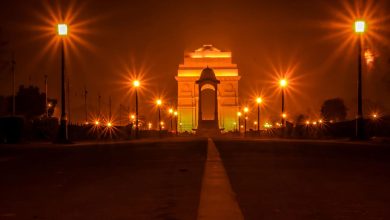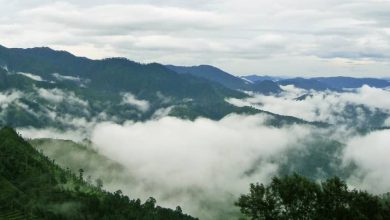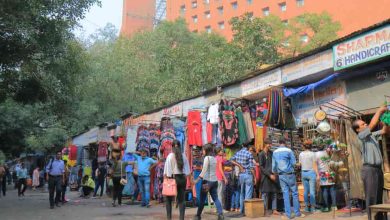Lodhi Garden stands as a prominent tourist attraction in India’s capital city – New Delhi. This marvellous recreational spot with its well-manicured lawns, lush green trees and mesmerising natural environment attracts travellers from across the world. It will also take you down memory lane with its monumental tombs and gumbads which are the existing testaments to India’s glorious past.
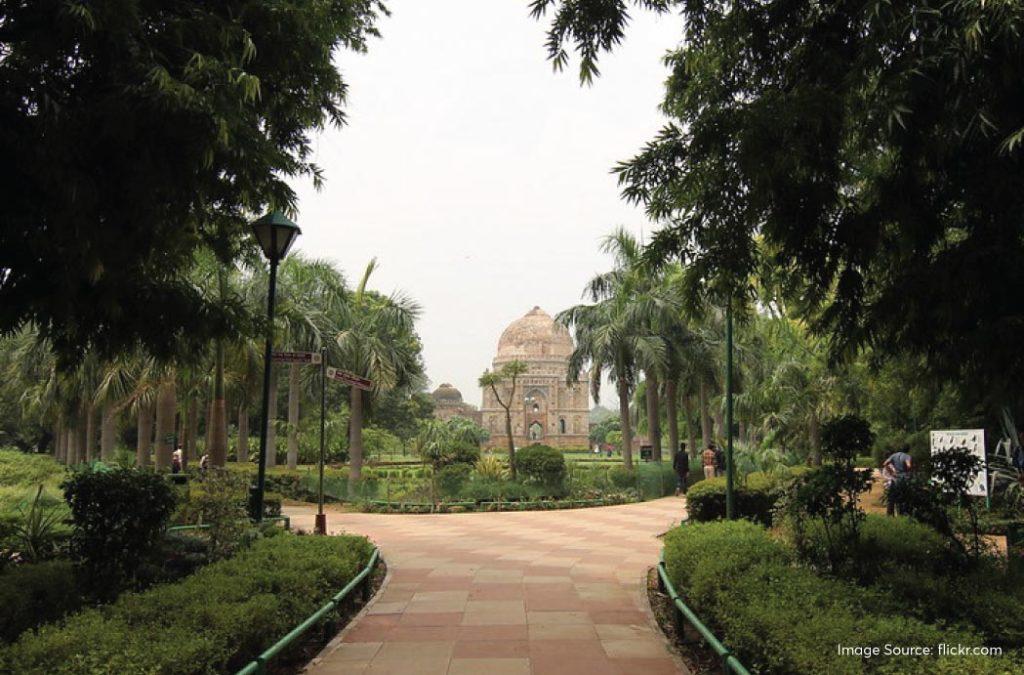
Lodhi Garden also offers much-needed respite from the hustle and bustle of metropolitan life. You can think of this place as a safe sanctuary for nature lovers who want a break from the urban chaos. In this green oasis, you will find sprawling lawns, cemented walking paths, tranquil waterbodies and perfect spots for your leisurely picnics!
Here’s everything you need to know about Lodhi Garden before you visit it.
Historical Background of Lodhi Garden
The history of Lodhi Gardens dates back to the 15th century. The place was initially meant to serve as the resting ground for two important Islamic rulers of India. The tomb of Mohammad Shah, a ruler of the Delhi Sultanate, was erected by his son, Ala-ud-din Alam Shah in the year 1444. Taking him as an inspiration, Ibrahim Lodi, the son of famous ruler Sikander Lodi, built a tomb for his father in the same place in 1517. Both these tombs are the perfect examples of splendid Indo-Islamic architecture.
After a few decades, when Emperor Akbar took control of Delhi, he turned Lodhi Garden into an observatory and had a library built in the space.
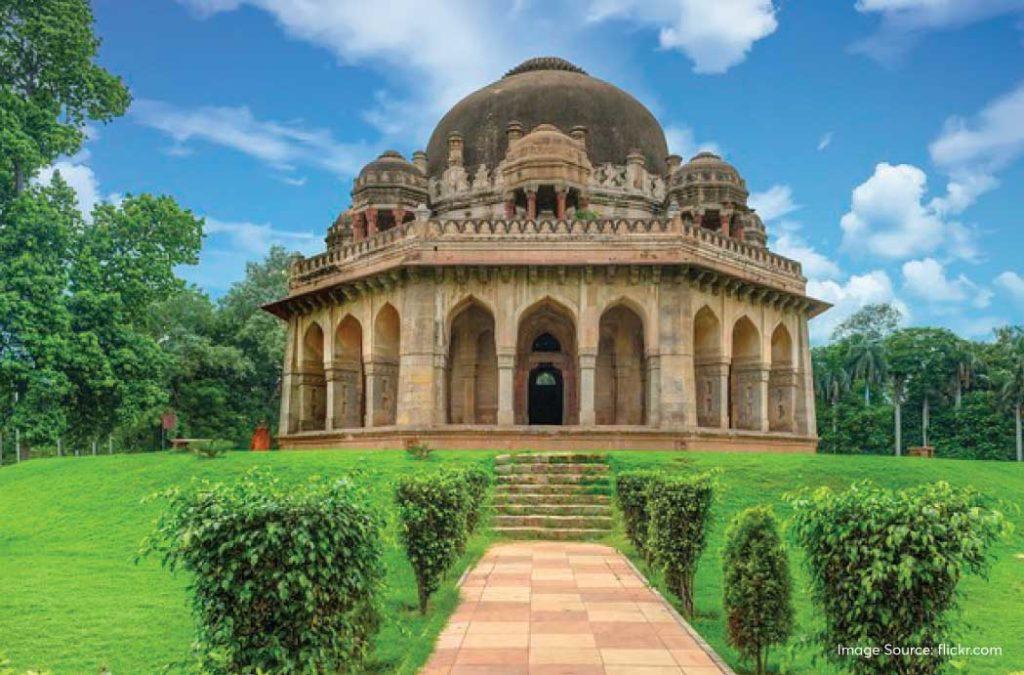
Seeing how the spot has become an important tool for supporting the regal activities, several people started coming together to reside near the place. Slowly, two villages developed near the tombs and the observatory. When East India Company colonised the country, the villagers were asked to vacate and the place was renovated into a garden.
Lady Willingdon, the wife of the Marquess of Willingdon, put in tremendous efforts to renovate the spot and turn it into a garden that would resemble the serene parks of England without losing the native charm of the Islamic era. That’s why, Lodhi Garden was initially known as ‘Lady Willingdon Garden’.
After India attained independence in 1947, the green oasis was renamed ‘Lodhi Garden’. It was renovated again in 1968 by Joseph Stein who also added a beautiful glass house to the garden.
Architectural Highlights in Lodhi Garden
Lodhi Garden is the best architectural delight that you must explore when you visit Delhi. Once you enter the garden, right in the middle, you will find the Bara Gumbad. This is a dome built in Indo-Islamic style and is believed to serve as the entrance to the mosque. Opposite the Bara Gumbad is the Sheesh Gumbad. The word ‘Sheesh’ means mirror and the dome gets its name because of its polished glazed-tile surface that can efficiently reflect light.
There are some unidentified graves in Sheesh Gumbad. Most probably, they belong to the important members or loyal administrative heads of the Lodi dynasty.
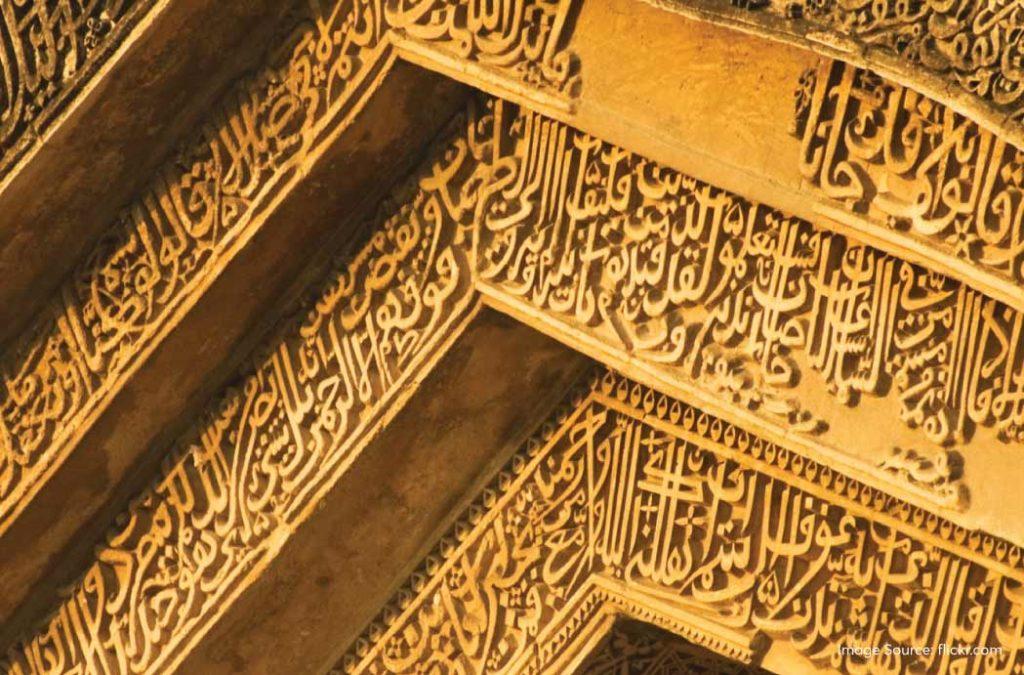
Travellers will also find remnants of a stream which may once have joined the flow of River Yamuna. Next to this is the tomb of Sikander Lodi. With its magnificent domes and enclosed battlements, it’s a visual treat. You can see that Sikander Lodi’s tomb is inspired by Mohammad Shah’s tomb which is present in the same garden.
Mohammad Shah’s tomb has an octagonal base and a wide central dome surrounded by smaller domes. The lotus motif at the top is a skillfully carved attraction. There are Islamic carvings on the plastered outer walls that narrate the importance of Islam and Allah.
Lastly, tourists can see the enchanting beauty of the Athpula Bridge which was built during the reign of Emperor Akbar. This bridge has a large central arch along with six other smaller arches.
If you are a fan of temple architecture, you can also visit the Akshardham Temple in Delhi to see the ethereal beauty of this spiritual haven.
The Sprawling Green Wonder
Lodhi Garden is a well-landscaped 90-acre space that has lush green and well-manicured lawns where you can enjoy a leisurely evening or plan fun picnics with your loved ones. The carefully curated plantings add more natural glamour to the place and you can see several indigenous and exotic species of plants here. The shrubs are trimmed to match the height of the plants and they beautifully line the walking paths. Lastly, you will find the towering trees that add the much-needed green canopies to keep Lodhi Garden cool and pleasant throughout the year.
You will also find certain medicinal herbs in Lodhi Garden that are used in making traditional ayurvedic medicines for curing ailments. And then there is the Lodhi Garden Lake. It is a hangout spot for birds and you can see migratory avians during the winter and summer seasons.
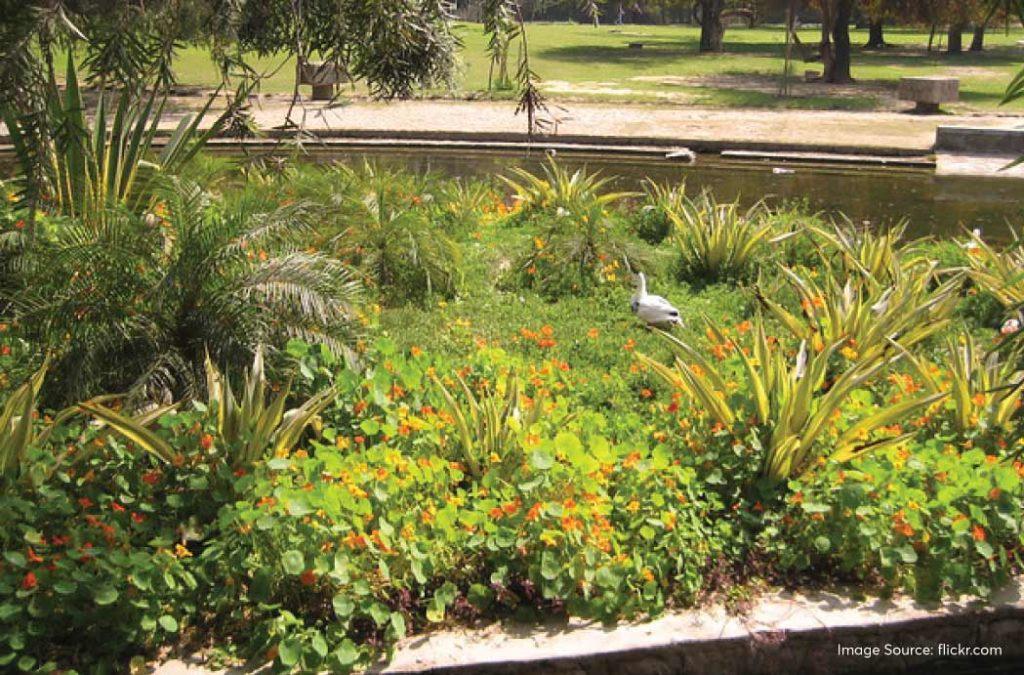
Lodhi garden is spread across a very vast area and requires visitors to walk for long distances. It is very easy to get tired. We suggest that you carry a bottle of water and some electrolytes, even during the winter or monsoon months. The water facilities and washrooms are present at the entrance so it will be a challenge to walk back all the way if you want to fetch a glass of water to quench your thirst.
Also, we are certain you’d not want to go back to the beginning when there’s so much to explore ahead!
Lodhi Garden Visiting Information
The Lodhi Garden remains open all year round and invites both national and international visitors to witness its regal charm. There is no entry fee to explore the garden and people carrying still cameras or video recorders need not pay any additional fee either.
You will see that a lot of local Delhi schools and educational institutions from the neighbouring cities bring their students to explore Lodhi Garden. This not only proves to be the best recreational break but will also turn out to be a learning experience for young minds. They can see for themselves how the Mughal, Sayyid and the Lodhi dynasties have established the base to build one of the finest gardens in the country.
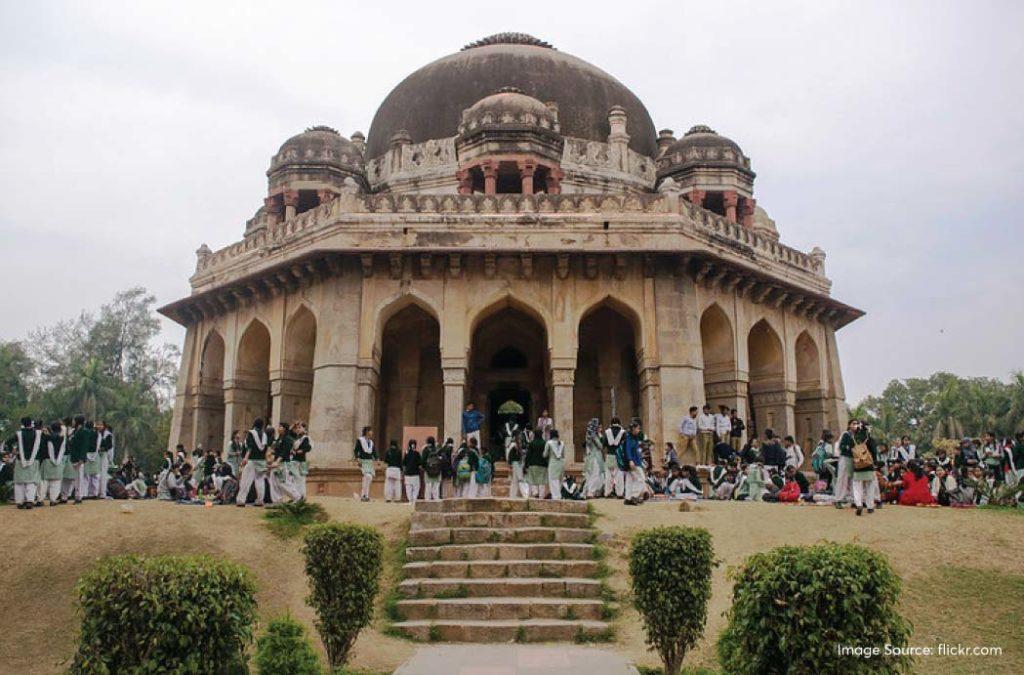
The visiting timings of the Lodhi Garden differ during different months. From April to September, you can visit the place from 5:00 AM to 8:00 PM. From October to March, the garden remains open from 6:00 AM to 8:00 PM.
During the summer and monsoon months, Lodhi Garden opens sooner because the sun rises around 5:00 AM and the visitors will have enough natural light to explore the surroundings of the garden. This is not the same during the winter season when the sun ascends at later hours. That is why, you see the change in timings during different months.
Things to see and do at the Lodhi Gardens
Explore the tombs – The first and foremost thing to do at Lodhi Gardens is to explore the tombs of the two Islamic rulers along with the Gumbads and mosque. These are the main monumental delights that will give you a glimpse of the past and fascinate you with their skilled construction.
Athpula Bridge – You can spend some time at the Athpula Bridge which overlooks Lodhi Lake and has a very soothing atmosphere all year round. You will also see why this construction played a very important role in Akbar’s observatory.
Leisurely walks – Take leisurely walks or find a peaceful spot to sit and relax amidst the lush greenery, trees, and flowering plants. You will hear the melodious chirping of the birds throughout the day and it feels like you’ve been embraced by nature itself.
Heritage walks – There are local tourist guides and institutions that help you hire guides. The history buffs can employ these people to learn more about the historical significance and architectural features of Lodhi Gardens and its monuments.
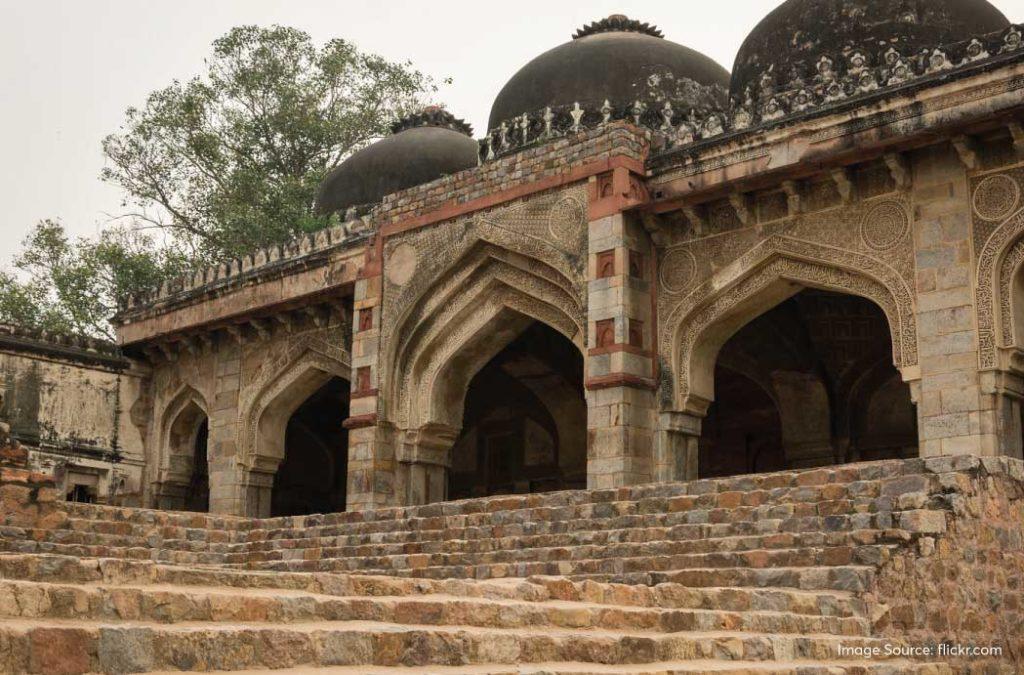
Picnics – Lodhi Garden is the best place to go for picnics! Pack your basket with delicious snacks and sandwiches, grab that picnic blanket and set out to enjoy quality time with your loved ones amidst the royal charm of this beautiful garden.
Photography – From blooming flowers to historic structures with awe-inspiring architecture, there’s everything in Lodhi Gardens. You can bring your cameras and videocams to click snaps and record videos that you can revisit at a later time. You will also see a lot of people doing pre-wedding shoots in this stunning location.
National Bonsai Park – The National Bonsai Park is present within the Lodhi Gardens. As soon as you enter the place, you will find the park on the right side. If you are not looking keenly, you might even miss the small entrance that leads to the stunning display of bonsai plants from all corners of the world. Here, you will see bonsais of different ages, colours and sizes along with boards that have all the information you need to know about each of these natural beauties.
Attend Events – Many important cultural and literature events are conducted in and around Lodhi Gardens. You can coincide your trip with one of these dates to explore the garden and also attend the events. For instance, film festivals, yoga classes and artist meet-ups are conducted frequently here.
If you plan on exploring other places in Delhi, we suggest that you pay a visit to Lotus Temple, another spectacular architectural marvel in the capital city.
Location and how to reach Lodhi Garden?
Lodhi Garden is located in South Delhi. It is present on Lodhi Road, which is between Khan Market and Safdarjung Tomb. You can cover both of these places as well while visiting Lodhi Garden. There are other important tourist attractions like Rashtrapathi Bhavan, Humayun’s Tomb, India Gate, National Zoological Park and Purana Khila which are less than four kilometres from Lodhi Garden.
You can reach Delhi by taking a flight to Indira Gandhi International Airport which is 18.3 kms away from Lodhi Garden. Alternatively, it is possible to take a train and get down at Delhi Railway Station which is 14 kms away from the garden. Once, you reach Delhi, you can use the local metro routes and reach Lodhi Garden without any hassle.
The nearest metro stations to Lodhi Garden are Jorbagh Metro Station (800 mts) and JLN Stadium Metro Station (1.5 kms). Jorbagh and Lok Kalyan Marg Metro Station (1.1 kms) will be the best options if you are travelling on the yellow line while JLN Stadium and even Khan Market Metro Station (1.1 kms) can be ideal points of drop if you are taking trains on the violet line.
You will easily find autos that will take you to Lodhi Garden and some visitors also prefer to get down at Jorbagh and take a walk to the gardens while exploring the surroundings.
Book your accommodations at hotels in Delhi in advance, preferably those that are close to Lodhi Garden to save time on commuting. This way, you will be able to spend more time amidst nature.
The beauty and gorgeousness of Delhi are not just limited to the garden. There are several other places that you can explore.
Lastly…
Lodhi Garden is an enchanting retreat that beckons people to relax amidst the glorious beauty of nature. It gives us an opportunity to shrug off stress and immerse in the peace and tranquillity of nature. From the imposing structures of Mohammad Shah and Sikander Lodi Tombs to the rippling waters of the Lodhi Garden lake, the picturesque atmosphere will tug at your heartstrings.
If you plan on leaving the clamour of city life behind and embracing a sense of calmness, come to Lodhi Garden and we are sure you won’t be disappointed.
